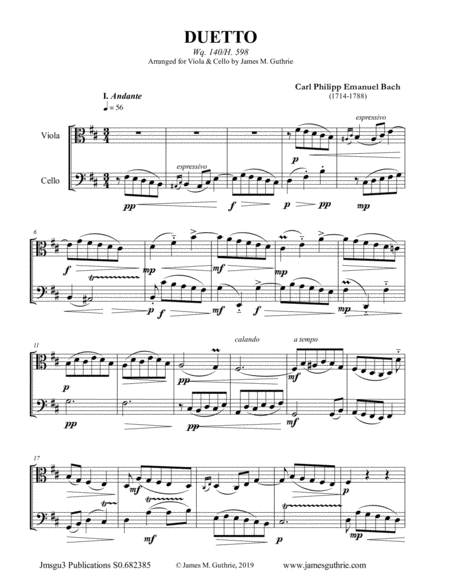Instrumental Duet Cello,Instrumental Duet,Viola - Level 4 - Digital Download SKU: A0.551135 Composed by Carl Philipp Emanuel Bach. Arranged by James M. Guthrie, ASCAP. Classical,Concert,Instructional,Standards,Wedding. Score and parts. 18 pages. Jmsgu3 #4996297. Published by jmsgu3 (A0.551135). Score: 9 Pages, Duration ca. 7:00 Contents:I. AndanteII. AllegroIII. Allegretto.
